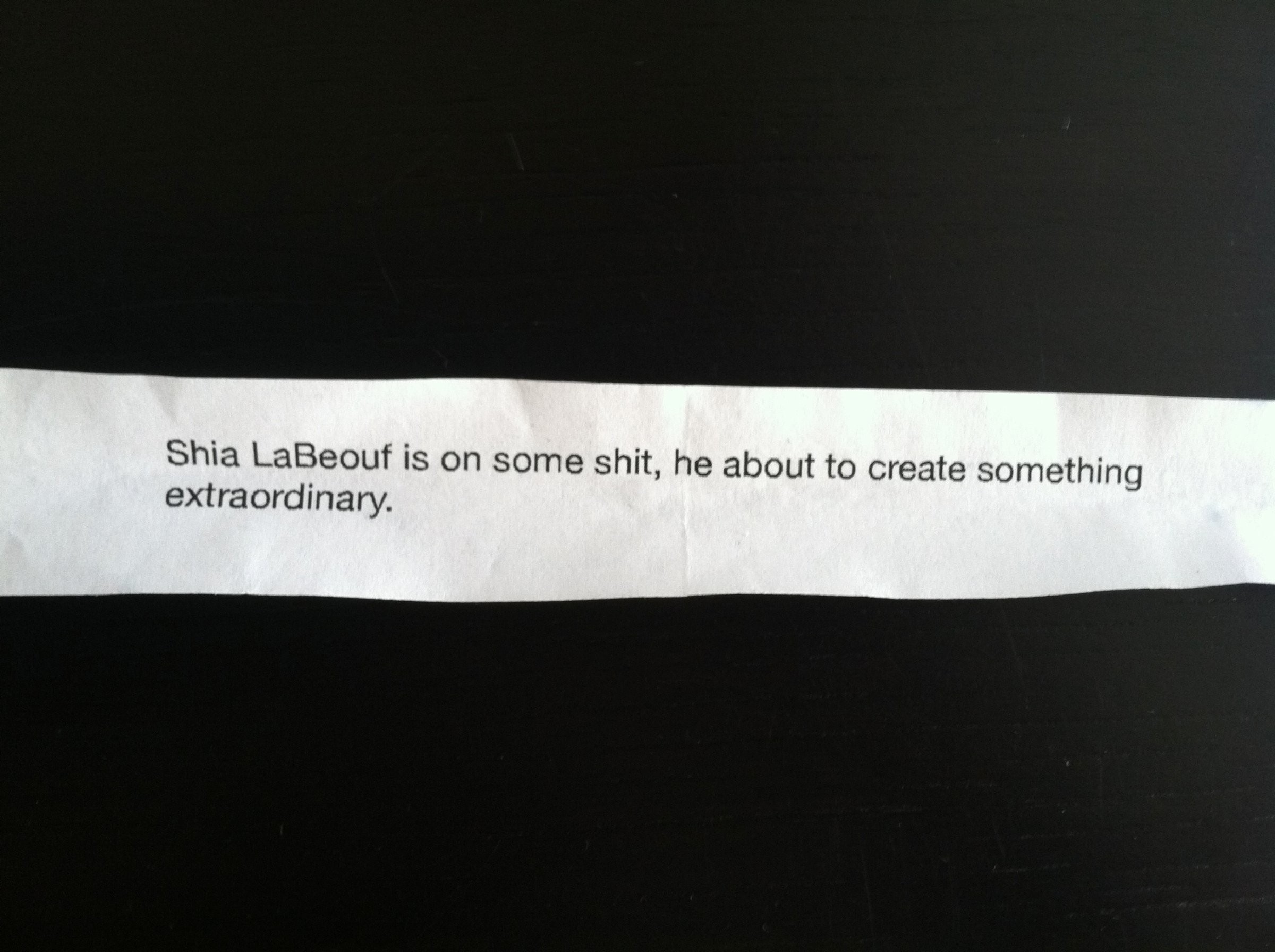
I was one of the first visitors to Shia LaBeouf’s #IAMSORRY exhibition at the Cohen Gallery in Los Angeles, the project that appears to be the culmination of many months of erratic behavior and deliberate plagiarism on the part of the actor.
I arrived in the late morning, just after the exhibition opened, and was frisked by a man outside on the sunny sidewalk, a foot away from glass bearing the words “#IAMSORRY” and “shia labeouf.” Inside the gallery, a woman behind a table (who I later learned was the artist Nastja Säde Rönkkö) asked me to choose an item from those laid out before her. The options: a whip, pliers, a bowl of Hershey kisses, a copy of Daniel Clowes’ Death Ray, a pink ukelele, a bottle of Brut cologne, an Optimus Prime toy (get it?) and a bowl of about 100 paper slips bearing typed messages. I reached for a single slip, but Rönkkö asked me to take the whole bowl, and so I did.
(MORE: A Brief History of Shia LaBeouf Copying the Work of Others)
In I went, and there, in a room about the size of a large closet, was a table, two wooden chairs and a man in a tux wearing a paper bag. Yes, that paper bag. The one with the words “I AM NOT FAMOUS ANYMORE” scrawled across Shia LaBeouf’s face.
I sat down. I read messages mostly negative, some positive, declaring LaBeouf either a “baby,” an “idiot,” or a “genius.” Things about having to “move on,” or suggestions of “death.” They felt like tweets; they probably were tweets. I read about thirteen notes in measured tones, opting out of the ones that were too harsh or too praiseworthy; I thought about reading the whole bowl, but then got self-conscious saying so many hurtful things to LaBeouf, who in that moment, just seemed like a mixed-up kid. (Frankly, I hope no one whips him, or worse, spritzes him with cologne.)
Without Shia speaking, and in costume, playing a role, I felt like I was in a haunted house. I closed my eyes and experienced the silence with Shia.
When I opened my eyes, I looked at his hands. There was one tattoo on each, and his fingernails were gnarled; they reminded me of hands I knew in high school. What had he been working on? I got up and left.
I’d entered with a sort of respect for the gallery as a concept, but it didn’t feel like a sacred space by the time I’d left: Ultimately, it was just me, a bowl of tweets, and an actor reacting to criticism. It wasn’t all that moving: It was just the sort of thing that makes you shake your head. The project borrows heavily from the work of Marina Abramoviç and Maria Legault, who attempted something similar with her The Apology Project, and it’s tough to give him much credit when the whole exhibition is so derivative. Then again, given that LaBeouf’s entire artistic position seems to be a commentary on originality — or a lack thereof — ripping off those who did it first was probably the point.
(MORE: Shia LaBeouf Is Really Sorry, Plans to Say So in #IAMSORRY Project)
More Must-Reads from TIME
- How Donald Trump Won
- The Best Inventions of 2024
- Why Sleep Is the Key to Living Longer
- Robert Zemeckis Just Wants to Move You
- How to Break 8 Toxic Communication Habits
- Nicola Coughlan Bet on Herself—And Won
- Why Vinegar Is So Good for You
- Meet TIME's Newest Class of Next Generation Leaders
Contact us at letters@time.com